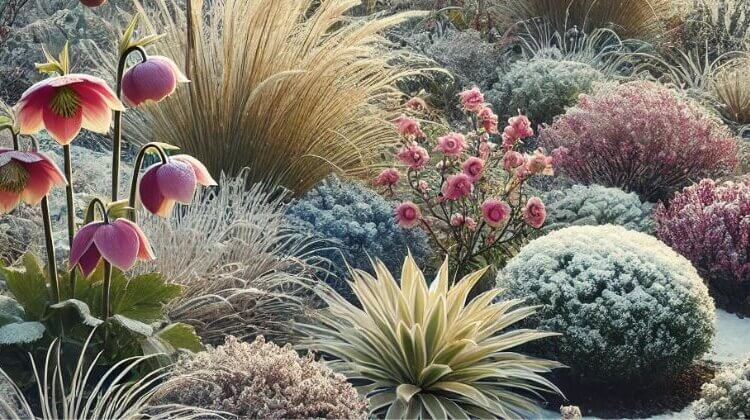
As autumn deepens and the vibrant colors of summer gardens give way to the more subdued tones of fall, many gardeners begin to consider how to sustain the beauty of their outdoor spaces into the colder months. Enter perennials, the stalwarts of the garden, which not only endure year after year but also offer structural backbone to the winter landscape. This post will explore the essential role that perennials play in winter gardens, highlighting their ecological benefits, aesthetic value, and practical uses during the chillier times of the year.
Understanding Perennials
What is a Perennial Plant?
A perennial is any plant that lives for more than two years, unlike annuals, which complete their life cycle in one year, or biennials, which do so in two. Common examples include lavender, hostas, and peonies. Perennials grow and bloom over the spring and summer, die back during the autumn and winter months, and then return in the spring from their rootstock.
Perennial Plant Characteristics
The key characteristic of perennials is their ability to survive winter and return each spring. While the above-ground part of the plant may die back, the roots remain alive, hidden beneath the soil. This adaptability makes perennials an essential part of sustainable garden planning, as they require less replanting and less soil disturbance compared to annuals.
The Significance of Perennials in the Garden
The Purpose of a Perennial
Perennials serve multiple purposes in a garden. Ecologically, they help stabilize soil and support biodiversity by providing habitats and food sources for various insects and wildlife. Aesthetically, perennials offer a range of colors, textures, and forms that change throughout the year, contributing to the garden’s visual interest across seasons.
Perennials in Winter
In winter, some perennials, known as winter perennials, remain green and functional, despite the cold. Plants like hellebores and winter heather not only survive but thrive during the chill, offering color and life to otherwise dormant gardens.
Perennials During the Winter Months
Adaptations of Perennials to Winter
Perennials have various adaptations that allow them to survive winter. Most enter a phase called dormancy, where above-ground growth stops and energy is conserved in the roots. This period of rest is crucial for their survival, as it helps them conserve moisture and reduce damage from cold weather.
What Happens to the Garden During Winter?
During winter, the garden transforms dramatically. Deciduous trees and shrubs shed their leaves, and the landscape can appear bare. Perennials with robust root systems can take this time to slowly strengthen and expand underground, preparing for vigorous growth when warmth returns. Gardeners should provide some maintenance, such as mulching, to protect these plants from freezing temperatures and to provide nutrients for the coming spring.
Choosing the Right Perennials for Your Winter Garden
Selecting Perennials for Winter Hardiness
Choosing the right perennials for your winter garden involves understanding your local climate and soil conditions. Opt for native species or those adapted to your area, as they will best survive local winter conditions. Additionally, preparing perennials for winter involves proper fall care, such as cutting back dead foliage and applying a layer of protective mulch.
Examples of Winter-Hardy Perennials
Plants like sedum, astilbe, and bugbane not only survive but add visual interest to the winter garden with their distinctive forms and textures. When selecting perennials, consider those that offer structural interest even after their blooming period ends, such as ornamental grasses or plants with interesting bark or seed heads.
Perennials are not just plants that come back year after year; they are crucial elements of a sustainable, vibrant winter garden. By choosing the right perennials, gardeners can enjoy a garden that is not only alive but also active during the winter months, providing ecological benefits and aesthetic pleasure.
Explore the versatility and beauty of perennials in your winter garden. Experiment with different species to find the perfect match for your garden’s conditions and your aesthetic preferences. Share your experiences or pose questions below to join the conversation about winter gardening.


Leave a Reply